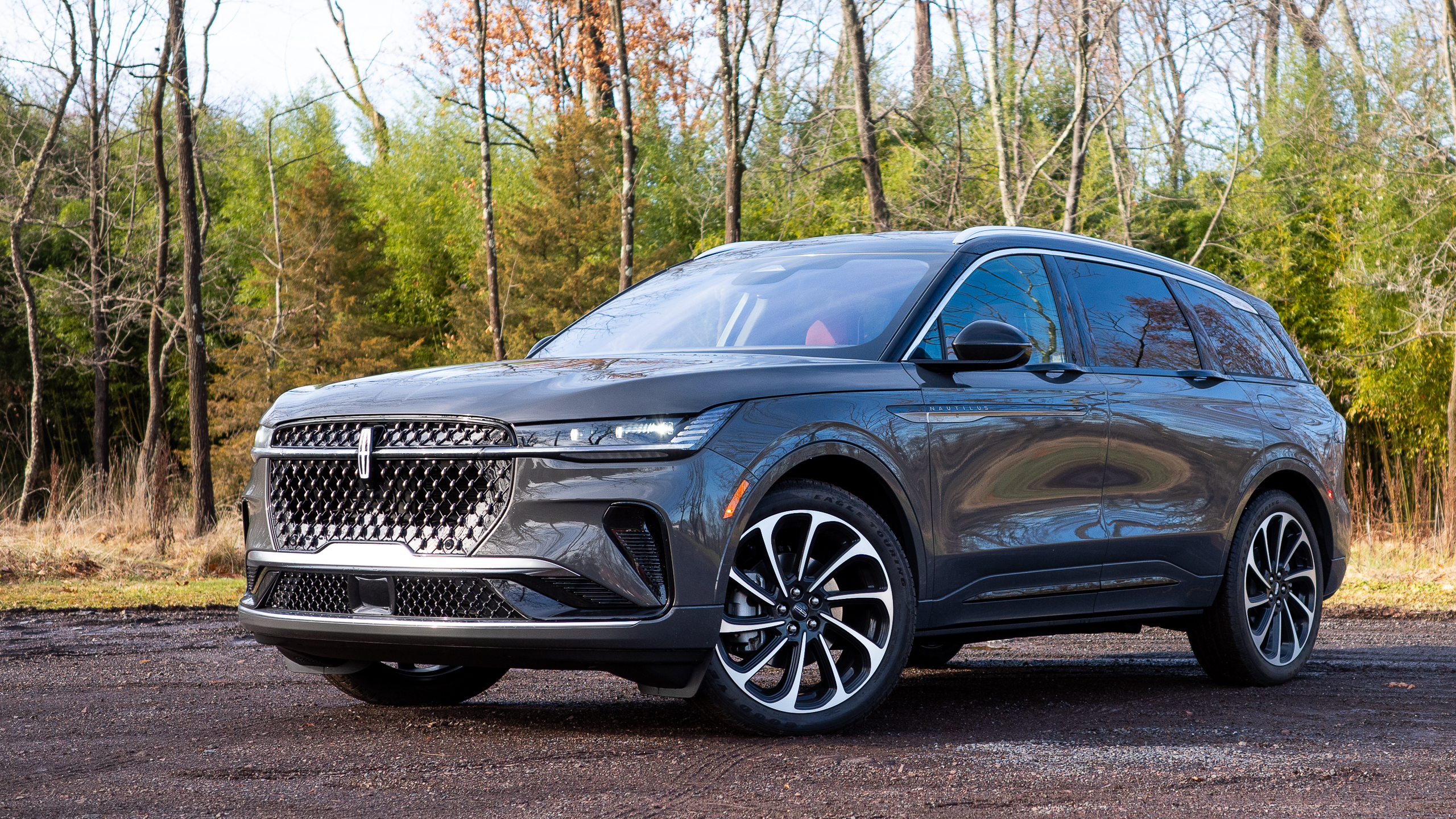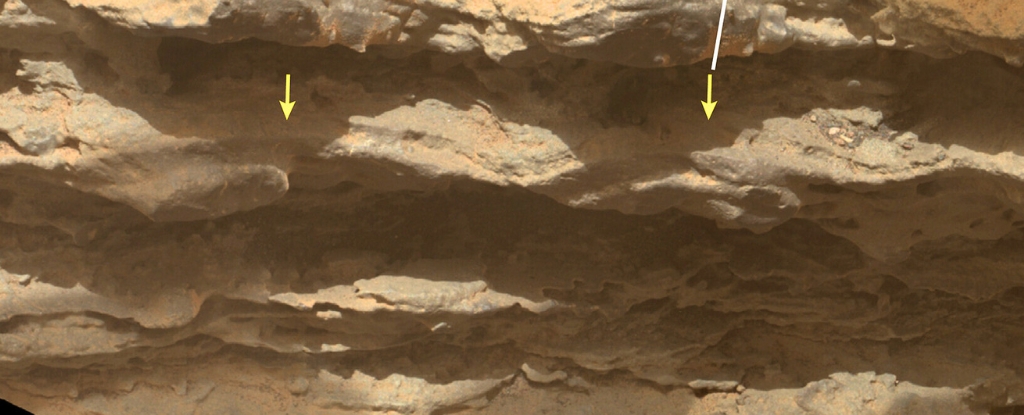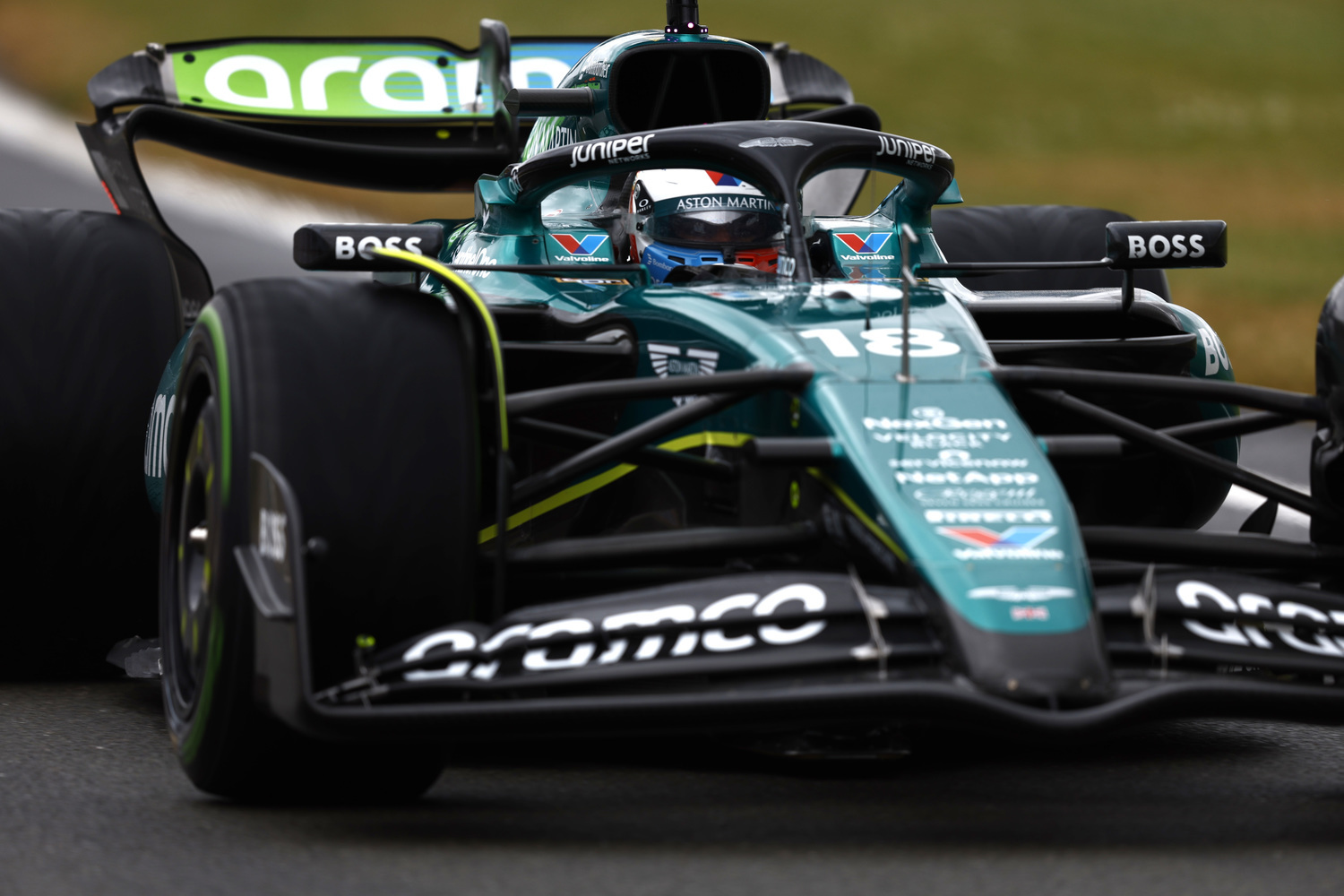2025 Lincoln Nautilus Review: A $70,000 Stress Ball You Shouldn’t Write Off
Never complicated and always refreshing, the Lincoln Nautilus lowers your blood pressure just running errands. The post 2025 Lincoln Nautilus Review: A $70,000 Stress Ball You Shouldn’t Write Off appeared first on The Drive.

You could lose a whole week bouncing between dealers if you really wanted to test drive every luxury midsize SUV out there. This segment is as crowded as they come, with so many options to choose from and so many numbers to compare. But then the 2025 Lincoln Nautilus Hybrid comes along, with its interior of walnut and burnt sienna, endless screen, and crystalline volume knob, cutting through all that noise. Oh—and it smells nice, too.
The Nautilus isn’t perfect, but it’s so good at first impressions from the moment you peer inside the cabin, that competitive analysis and Googling “is [car name] good reddit” don’t quite hold the same utility here. And sure, that sounds easy to say about a vehicle that retails for $80,545, in the case of my Black Label tester. Fortunately, you don’t need to spend quite that much to access what makes the Nautilus special, and at the very least a worthy consideration for anyone in the market for a posh, roomy SUV.

The Basics
The second-generation Lincoln Nautilus only hit the scene last year, so changes are modest for 2025. This SUV sits between the smaller Corsair and larger Aviator in Lincoln’s lineup, starting at $52,010, but all of its three trims now feature four years of BlueCruise highway driving assist system as standard. Lincoln Rejuvenate, an “orchestrated multi-sensory experience” that utilizes the vehicle’s 48-inch cowl display, 11-inch touchscreen, digital scent cartridges, and massaging front seats to help passengers relax or meditate, is also now available as an option on the Reserve trim and comes standard on the range-topping Black Label variant.



The Black Label is the one I sampled, with the hybrid powertrain. Every Nautilus uses the same 2.0-liter EcoBoost inline-four making 250 horsepower and 280 lb-ft of torque, sent to all four wheels. For an extra $2,000, buyers can add an electric motor to bump those figures to 310 hp and 295 lb-ft. Opting for the hybrid powertrain also swaps out the standard eight-speed automatic gearbox with an electronic continuously variable transmission.
On the outside, the Nautilus is certainly sharp, though you’d never call it groundbreaking. For the kind of vehicle this is, though, and the customer it’s built to attract, that’s absolutely fine. The roofline trades on black paint and accented silver to visually slim down the canopy, like so many other SUVs, and I like the way the LED light bar up front acts like a shelf for the actual headlights to rest on while running across the grille.




As cohesive and clean as the Nautilus’ exterior is, it’s inside the cabin where Lincoln’s designers did their finest work. Yes, there is a very, very large screen and we’ll get to that, but that’s not what hit me first. The Redwood leather accents and seats with their suede inserts—a Black Label-exclusive color—as well as the stainless steel speaker grilles and subtle touches of walnut peppering the dash all fit so well together. Material quality is exceptional top to bottom, and that shouldn’t be lost on anyone skeptical of the Nautilus’ Chinese construction. This interior is airy and futuristic, but in a refreshing, soulful way, rather than the stark minimalism that most marques pass off as cutting-edge.
Driving the Lincoln Nautilus Hybrid
Comfort is the first port of call of a big, cushy SUV like this, and the Nautilus is comfortable in just about every dimension. Steering is tuned to be very light and quick at very low speeds for parking-type maneuvers, and more natural on the road. That’s convenient because the wheel’s pseudo-rectangular design isn’t exactly the most intuitive for hand-over-hand duty. I got used to it quicker than expected, though, and the Nautilus actually handles quite confidently in its “Engage” sport setting.

Adaptive suspension comes standard on the Reserve and Black Label trims. The Nautilus has a tendency to wallow a little over road imperfections in its standard driving profile, but switching to Engage stamps that out significantly without sacrificing much in comfort. It was my favorite way to drive the Nautilus; sure, bumps are more defined in the SUV’s sportier setting, but you get less of that reverb sensation after contact. Engage also sharpens up throttle response as you’d expect, tapping into the instant torque of that electric motor. The powertrain makes this roughly 4,500-pound SUV feel quick enough on its feet, and I was never wanting for more grunt.
I was, however, wanting for a more intuitive brake pedal. Slowing down in the Nautilus feels very binary; once you hit the bite point, the range of modulation available is very short. That makes smooth braking difficult, especially when crawling, and that kind of herky-jerkiness is the opposite of what anyone wants or expects in a luxury SUV. This appears to be a quirk of Ford’s hybrid system—my colleague Caleb Jacobs noted the Maverick Hybrid had an oversensitive brake pedal too—and as I understand it, the non-hybrid Nautilus feels more natural in this regard. It’s not a dealbreaker and I do think most people will get accustomed to it the more they drive the car, but get into anything else and you’re quickly reminded how braking should feel.


Every Nautilus provides four years of BlueCruise, Ford’s hands-free, semi-autonomous driving system that is whitelisted to operate on certain highways. I’d never tried BlueCruise before this, and I found it reliable and easy to use, at least in the Nautilus. In some cars, triggering the most advanced version of cruise control or highway assist on offer requires an arcane sequence of key presses like a cheat code in an old video game, one you’ll never remember if you don’t use it often. But in the Nautilus, BlueCruise is simple; the digital instrument cluster notifies you when it’s available, and in those instances, it essentially replaces adaptive cruise control and is activated the same way. It takes just one button press on the steering wheel, and on-screen messages and iconography make it very clear when it’s active or not. It also supports automatic lane changes, with a flick of the stalk.
The Highs and Lows
Alright—now for the 48-inch pillar-to-pillar screen in the room. It’s the single feature of new Lincolns that have garnered the most divisive reactions, and rightfully so. Ordinarily, I am not the sort of person who would label a large screen like this as a plus rather than a minus; I like tech, but for practical purposes, and my light-sensitive eyes don’t tend to appreciate frivolous LEDs. But even I have to hand it to Lincoln because this panel isn’t as obtrusive as you’d think, nor as cluttered or overwhelming. And the software driving it, as well as the 11-inch main control touchscreen below it, is the most intuitive I’ve used as of late.



There are many reasons why I believe this display works, where others fail. For starters, it offers very granular brightness adjustment, which is imperative if you’re going to have millions of pixels lighting up the dash at night. It’s customizable too, but not overwrought; even with every possible space for widgets occupied, there’s enough room for information to breathe, and you can of course position the map, currently playing media, weather, trip info, and fuel economy data wherever you like them, or not at all. I especially love how an icon of the dual steering wheel directional pads appears next to the speedometer when your thumbs hover over them, offering more contextual information. That’s just genius.


What’s more, the Android Automotive-based operating system and interface are responsive and easy to use. There’s that big, bejeweled volume knob, and the HVAC controls, while only present in software, are at least always reachable along the bottom of the touchscreen. I can live with it, though if I had one gripe, vents that can be positioned only by software are evil. Automakers should’ve cut that out yesterday.
Aside from that last point, the Nautilus’ tech doesn’t feel like it exists purely for its own sake, and that’s perhaps the best praise I could give it. I’d argue that even with that wide screen, this car is less complicated to live with and use on a daily basis than most others out there right now, with fewer or smaller displays.
There’s plenty else to like in this cabin as well; the 28-speaker Revel 3D stereo system is stunningly good and made me very grateful that Kendrick Lamar’s GNX dropped about the same time as I had this tester. If I had to describe it in a word, it would be “atmospheric,” especially with spacier, twinkly tracks like “Hey Now.” The digital scents included with the Black Label trim were nice, too. I have no idea what “Ozonic Azure” means or what it’s supposed to smell like, but it was my personal favorite.

Speaking of the scents, they’re a big part of Lincoln Rejuvenate—a feature that leverages many of the Nautilus’ interior bells and whistles to help you relax. When parked, you can summon a five- or 10-minute guided meditation, in one of three themes. Rejuvenate will automatically recline your seat to a more leisurely position, modulate the seat heating, climate control, and kick on the massaging while calming scenes of the Aurora Borealis or waterfalls stretch across the dash displays, and a voiceover delicately encourages you to breathe mindfully, and cast away all that negative energy.
First off, I wish I was the type of person who could get more out of this—who this sort of experience could reach—but I’m chronically mired in stress and never learned how to manage it in 31 years, so it didn’t really do anything for me. Fortunately, the 24-way adjustable seats are very comfortable whether you’re luxuriating or actively driving, and I dug the massage function, which often disappoints in most cars. Lincoln generously gave the front passenger seat massaging too, though I noticed one glitch where whenever my partner adjusted her setting, it turned off mine.


One other tiny interior issue: The bottom of the dash terminates pretty low in the driver’s footwell, such that I had to be very mindful of how I positioned the seat and my legs, otherwise the tip of my right foot would brush or strike the plastic when moving between pedals. I’d guess the Nautilus must’ve been an ergonomic challenge for Lincoln’s designers—the top of the dashboard has a very prominent stepped effect due to the huge screen, and maybe that could explain the squat shape of the steering wheel, too. I was perfectly comfortable in every other way, but if you buy one of these and find yourself kicking plastic quite often, know that you’re not alone.
Lincoln Nautilus Features, Options, and Competition
The base Lincoln Nautilus in its Premiere trim starts at $52,010. All-wheel drive is standard, though hybrid power adds $2,000 to the total, and many of my favorite things about this range-topping Black Label tester only become available when you step up to the mid-level Reserve trim for $62,705. That one adds adaptive suspension and the panoramic sunroof, and unlocks the optional Reserve III package for $4,455, tossing in those comfortable 24-way adjustable massaging seats and the 28-speaker Revel 3D audio system, as well as the Rejuvenate feature.
Check the boxes for both of those options on a Nautilus Reserve, and you’re looking at a sticker of $69,160 excusing an exterior color that isn’t the standard black or silver. And at that point, the Nautilus we’ve just built—which is the one I’d spec if it were my money—has just about everything a Black Label would, except for the Redwood-tone interior leather. I do love the rusty autumn shade, but not enough to drop another $8,000 on it. Besides, lower trims have the option of Allura Blue leather, which is a more-than-acceptable alternative to Redwood. We need more blue interiors, people.



Now, the Black Label trim does include other perks, but they’re more for the owner than the vehicle. Black Label buyers get four years/50,000 miles of all required maintenance included (even covering normal wear items like brake pads) up to four visits, on-demand car washes, remote service pickup and redelivery, and culinary concierge for restaurant reservations. Nice, but not exactly five figures of value. Lincoln really ought to at least make the hybrid powertrain standard at this level.
Attempting to whittle down a list of competitors for a midsize luxury SUV is a fool’s errand, but it’s why we’re here. Vying for your dollars in this segment alongside the Nautilus are the Cadillac XT5 (starting at $47,690), Volvo XC60 ($48,345), Lexus RX350h ($52,475), Genesis GV80 ($59,550), Mercedes-Benz GLE 350 ($63,000), BMW X5 ($67,475), and Audi Q8 ($75,695). Some of those incorporate electric motors while others are pure gas, but the Nautilus Hybrid’s 310 hp is a healthy sum compared to that group’s respective base trims. It lands just ahead of the 300-hp GV80 and is outgunned only by the X5 and Q8, which are much more expensive.
Fuel Economy
The Lincoln Nautilus Hybrid is rated for 30 mpg city and 31 mpg highway, but I never got anywhere near that in my week of testing. My SUV averaged 25.7 mpg on a 90-mile, mostly highway drive, for example.
It probably didn’t help that I was making liberal use of seat heating and massaging, plus the digital scents during my time with the vehicle. Your mileage, quite literally, may vary. What I can confirm is that the hybrid’s low-end torque and ability to handle town cruising under its own power do even out the usual city/highway discrepancy.

On paper, at least, we can see that the Nautilus compares favorably to its three closest rivals, though based on my experience I’d venture to say that the SUV’s real-world performance is a step behind these healthy numbers.
Value and Verdict
If I had some $70,000 to spend on a relatively fuel-efficient, luxury midsize SUV, it would be difficult to write off the 2025 Lincoln Nautilus. And in a field as crowded as this one, that’s pretty high praise. No, it isn’t cheap, but when spec’d reasonably, the Nautilus achieves a “just right” mix of performance and comfort, with an interior that still feels thoughtful and approachable despite its extensive tech and plethora of pixels. And how many new cars in 2025 could you say that about?







| 2025 Lincoln Nautilus Specs | Gas | Hybrid |
|---|---|---|
| Base Price (Black Label as tested) | $52,010 | $54,010 ($80,545) |
| Powertrain | 2.0-liter turbo-four | 8-speed automatic | all-wheel drive | 2.0-liter turbo-four and two electric motors | continuously variable transmission | all-wheel drive |
| Horsepower | 250 @ 5,500 rpm | 310 @ 5,500 rpm |
| Torque | 280 lb-ft @ 3,000 rpm | 295 lb-ft @ 3,000 rpm |
| Seating Capacity | 5 | 5 |
| Curb Weight | 4349 pounds | 4,517 pounds |
| Towing Capacity | 1,750 pounds | << |
| Cargo Volume | Premiere: 36.4 cubic feet behind second row | 71.3 cubic feet behind first row Reserve/Black Label: 35.2 cubic feet behind second row | 68.8 cubic feet behind first row | << |
| Ground Clearance | 7.9 inches | << |
| EPA Fuel Economy | 21 mpg city | 29 highway | 24 combined | 30 mpg city | 31 highway | 30 combined |
| Quick Take | Never before has a car with so much tech been so easy to wrap your head around. We just wish the brakes were less finicky. | |
| Score | 8.5/10 |
Got tips? Send ’em to tips@thedrive.com
The post 2025 Lincoln Nautilus Review: A $70,000 Stress Ball You Shouldn’t Write Off appeared first on The Drive.
What's Your Reaction?















































































